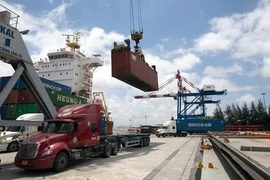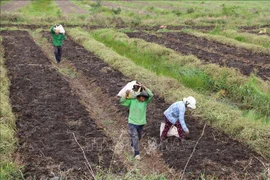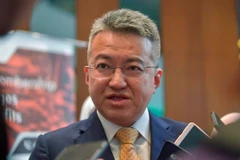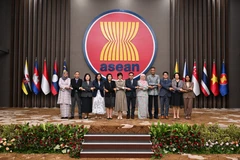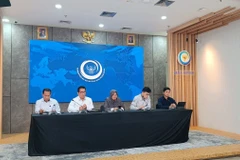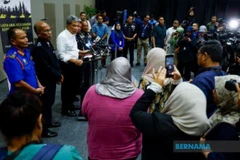Hanoi (VNA) – The year 2025 is set to be a challenging year for Southeast Asian countries that are looking to boost their economic growth while the world faces economic slowdown, geopolitical tensions, and trade fragmentation, particularly new tariff by the US – the largest economy in the world.
In Indonesia, which is the region’s biggest economy, these internal hurdles come in the forms of sluggish household consumption due to the shrinking of its middle-class population and a series of ambitious programmes introduced by a newly formed government which might upset the country’s fiscal stability, channelnewsasia.com reported on January 3.
Meanwhile, Thailand is looking to revive its tourism and service industry-driven economy which had been battered by the COVID-19 pandemic. However, low domestic consumption, high household debt and political instability might hinder this aspiration.
In Malaysia and Vietnam, both of which saw stellar economic performances in 2024, the main challenge would be to maintain momentum and continue to pull in foreign direct investment (FDI) amid a host of global challenges.
Piter Abdullah, Executive Director of Jakarta-based think-tank Segara Institute, said that the challenges will be hard.
He said Southeast Asian countries will have to navigate high global uncertainty while grappling with domestic challenges which are equally heavy.
The biggest challenge would come from US President-elect Donald Trump, who has vowed to impose a series of measures to protect American-made products.
During his first term in office, Trump imposed heavy tariffs on Chinese goods, prompting a so-called tariff war. The policy continued under the Joe Biden administration which expanded it to include products made by Chinese-owned companies operating in other countries like Vietnam, Thailand and Malaysia.
Meanwhile, China is a key trading partner for many Southeast Asian nations. As the threat of a renewed tariff war looms, analysts said Southeast Asian countries need to diversify their markets.
However, finding new trading partners will not be easy as several of Europe’s biggest economies are facing political turmoil and economic decline and East Asian giants China and Japan are still grappling with deflation.
According to December 2024 economic forecasts by the Asian Development Bank (ADB), Southeast Asia’s growth for 2024 has been revised up to 4.7% from 4.5%, driven by stronger manufacturing exports and public capital spending in larger economies.
Growth picked up in Malaysia, Thailand, Singapore and Vietnam, supported by domestic demand, lower inflation and sustained public investment, ADB said.
While Vietnam sees rising foreign investment, other Southeast Asian economies like Indonesia and the Philippines are on track to meet previous growth forecasts, the bank said.
However, geopolitical tensions, trade fragmentation, and severe weather events - such as Typhoon Yagi and Tropical Storm Trami - pose risks to growth, particularly in agriculture and infrastructure.
ADB expects Southeast Asia’s growth to hold steady at 4.7% in 2025, although it warned that policies under the incoming Trump administration in the US may impact the region.
The bank noted that changes to US trade, fiscal and immigration policies could dent growth and boost inflation in developing Asia. It added that significant policy changes are expected to take time and be rolled out gradually, with the impact mostly felt beyond the 2024-2025 forecast horizon./.

